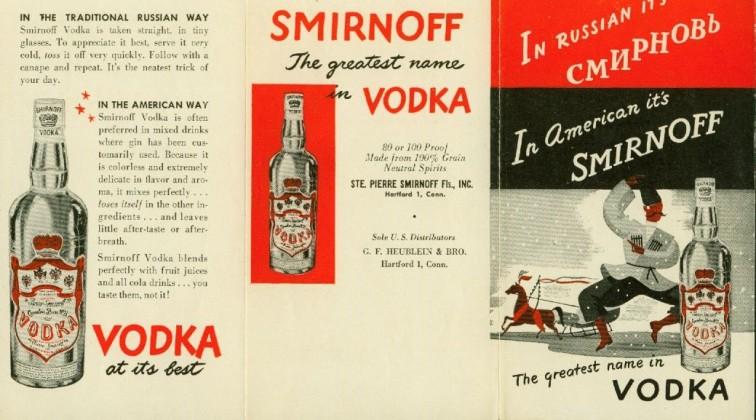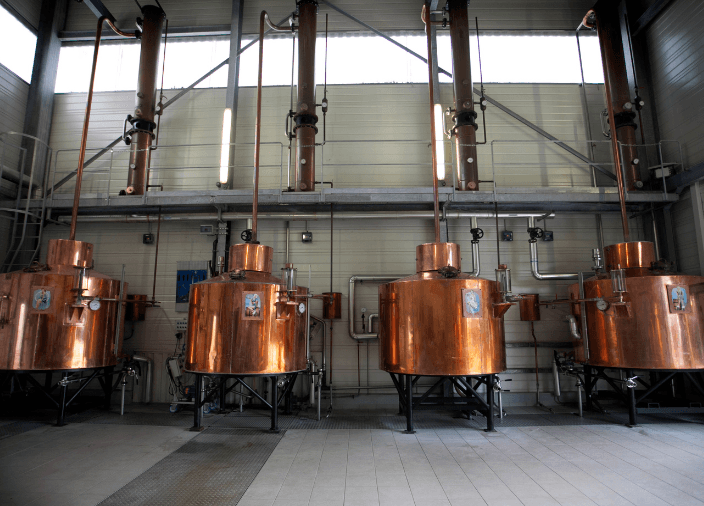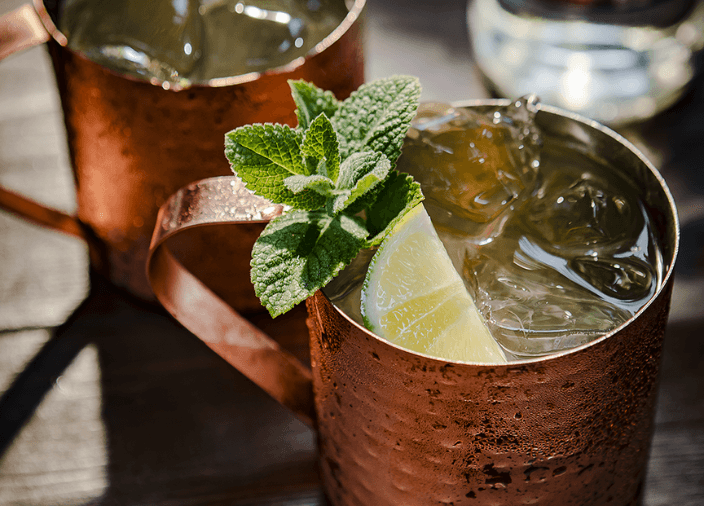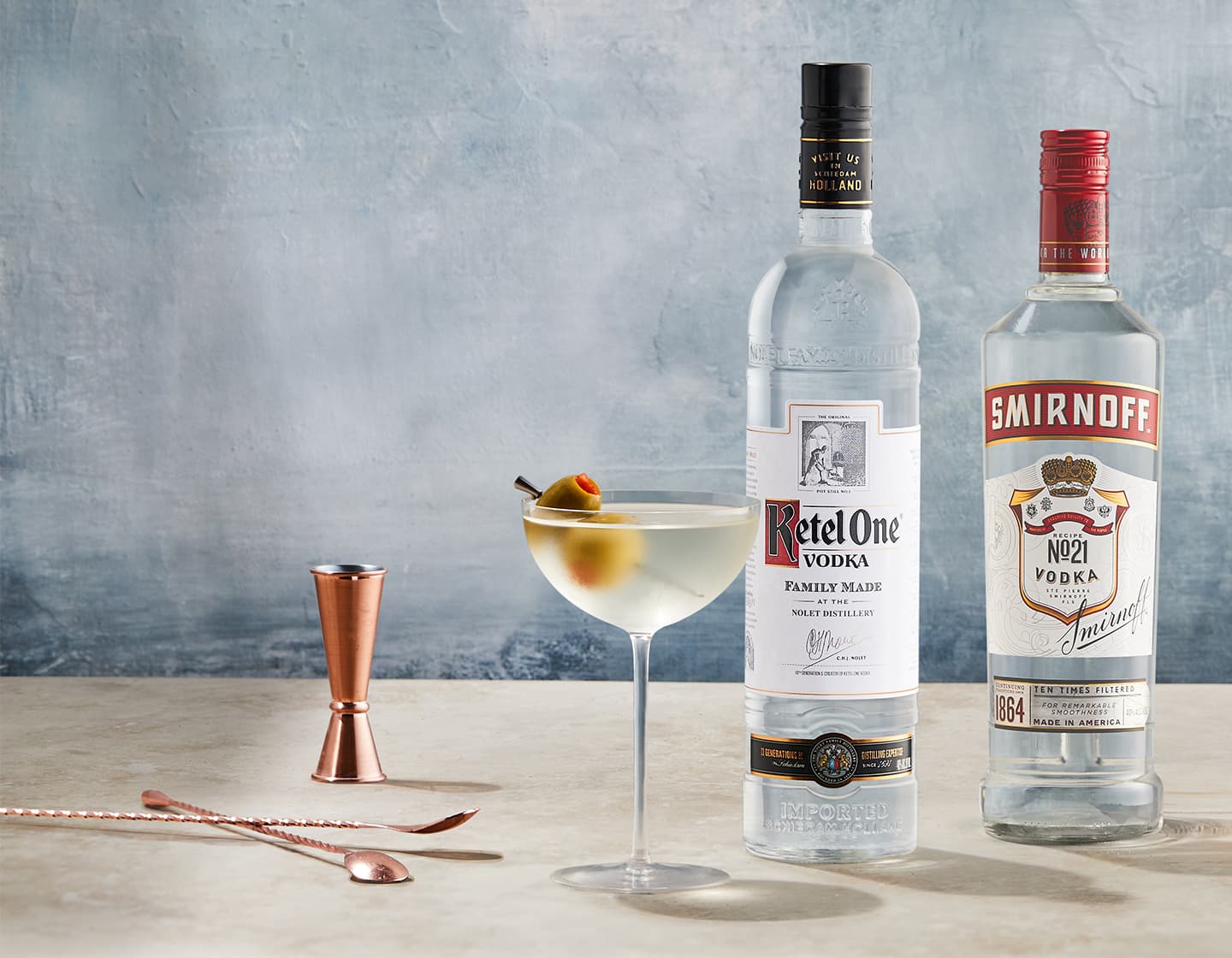An Expert Guide To Vodka
Discover Vodka's intriguing history, production techniques, modern innovations like charcoal distillation, and creative vodka cocktail recipes.
Estimated reading time: 6 minutes
WHAT IS VODKA?
Get an in-depth look at all things Vodka in this Behind the Liquid video with Diageo’s Head of Luxury Advocacy, Claire Warner.
Discover the fascinating world of vodka as we delve into its intriguing history, production techniques and modern innovations like charcoal distillation. Read on to unlock a trove of creative cocktail recipes from the timeless Martini to the zesty Mule.

The History of Vodka
The first distilled spirits date back to the eighth century when alchemist Geber invented the alembic still to capture alcoholic vapours from wine. The resulting alcohol was primarily used to produce perfumes. By the twelfth century, medieval alchemists were distilling grape wines in the monasteries of Italy.
It is unclear how the knowledge of distillation travelled to Moscow, but by 1430, the monk Isidore created a recipe for the first Russian vodka. This ‘bread wines’ or ‘Polugar’ vodka was distilled in copper pot stills, a practice outlawed by the Tsar in 1895.
Russia's Contributions
In the 18th century, Russian chemist Theodore Lowitz invented charcoal filtration to remove impurities from the final spirit, making it more hygienic.
The Russian aristocracy monopolised vodka production, leading to social unrest and political implications. This was a major factor in the Bolshevik revolution of 1917, which forced leading distillers, such as Vladimir Smirnov, to abandon production and flee across the Atlantic, helping introduce vodka to the Western world.
Poland's Influence
The Polish word ‘wódka’ can be traced back to 1405, referring to alcohol-based medicines and cosmetics derived from frozen wine. In the 16th century, Polish families produced their vodka at home, flavouring it with fruit and herbs to mask the rough alcohol taste. This tradition of using natural flavourings still characterises Polish vodka production today.
Polish vodka is traditionally made from rye, but potato is also a common raw material. The cultivation of potatoes in Poland began after a royal exchange in the early 19th century when the Austrian Emperor gifted the Polish King the exotic item from the Americas. Potato vodkas are usually more creamy, sweet, and full-bodied than grain vodkas and are supposedly gluten-free.
Today, over 130 distilleries produce 320 million litres of vodka annually using 420,000 tons of grains and 80,000 tons of potatoes.
Fun Fact: Before World War II, vodka consumption stayed within its countries of origin. However, in 1941 the creation of the Moscow Mule cocktail in the US, reportedly the invention of restaurant owner John G. Martin, revolutionised vodka's popularity in the West and helped launch a cocktail revolution that would sweep America.
Ingredients
- Vodka can technically be made from anything with a sugar or starch content.
- Most are produced from either grain, potato, sugar cane, corn, or fruits, as in the case of Cîroc, grapes.

Distillation
- Unlike traditional pot distillation, continuous column distillation has a better chance of meeting vodka production’s legal requirements while producing at a large scale effectively and cost-efficiently.
- Requirements for high distillation strength are 95% ABV or above in the United States and 96% ABV or above in the EU, and purity is a maximum methanol level of 10g/100L pure vodka in the EU.
- A Coffrey still with two columns may meet basic requirements, but it is more common to use multiple-column setups (up to five columns), mainly when producing neutral-style vodkas.
- Additional columns are utilized to remove fusel oils and methanol, such as a hydro-selector and demethyliser.

Continuous Column Distillation
- A column still, as the name suggests, can be composed of a single column or a series of interconnecting straight columns.
- In a single-column setup, the fermented wash (known as feedstock) is fed into the column at about the halfway point.
- The wash travels down the plates of the column due to gravity and eventually meets the rising steam from the bottom.
- Ethanol and other volatile components evaporate and rise, while most of the steam condenses to water and flows back down the column.
- Different elements of the vapours condense on each plate according to their boiling points, gradually separating the heavier compounds towards the bottom plates and the lighter ethanol and methanol towards the top of the column.
- Higher purity is achieved with more plates, and the process is continuous only if the flow feedstock, steam, and extraction are constant and equal.
Styles of Vodka
- Neutral – Multiple-column still distillation and optional charcoal filtration produce an exceptionally smooth, light flavour profile. This neutral style is popular worldwide, with Smirnoff being the best-known example.
- Characterful – More subtle than other spirit categories, this type of vodka's distinctive qualities stems from the production methods, the ageing process, or the specific ingredients, for example:
- Wheat creates a subtle, biscuity spirit with a hint of aniseed.
- Rye, favoured in Poland, gives the spirit a zesty, spicy cereal and bread flavour.
- Barley-based vodka is light, clean, and crisp.
- Potatoes gave a denser, creamier textured vodka with slight vegetable notes.
- Flavoured Vodka – Vodkas can be flavoured with spices, fruits and botanicals using various techniques. The producer can extract natural flavours using maceration, distillation and percolation or add nature-identical flavours using cold compounding.
Myth Buster: "Vodka is tasteless and odourless"
While vodka is known for its neutral flavour and aroma, it is not entirely tasteless or odourless. High-quality vodkas can have subtle hints of sweetness, creaminess, or even a slight peppery note, depending on the raw materials and production methods.
Keen to stay in the know and ahead of the game? Join the Diageo Bar Academy for inspiration, tips and the latest trends.
